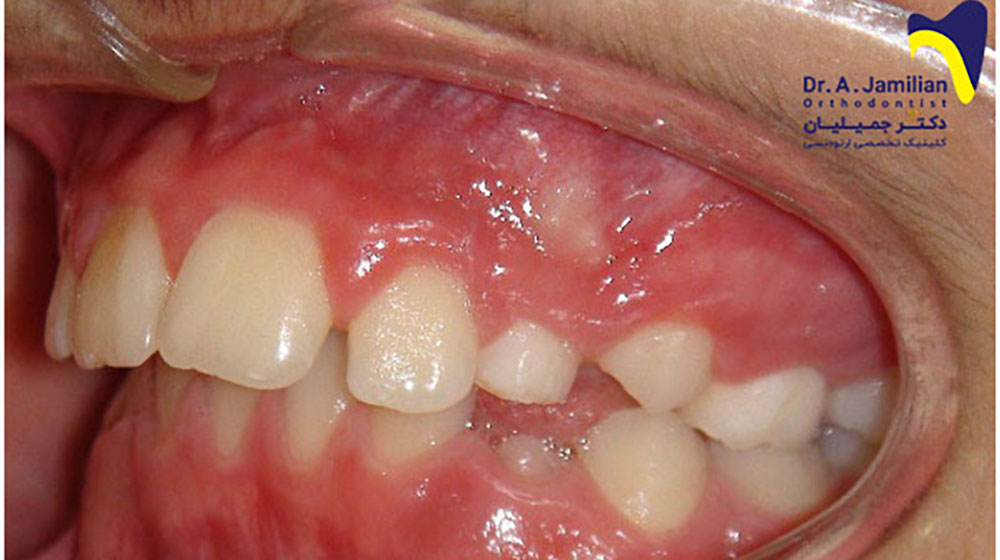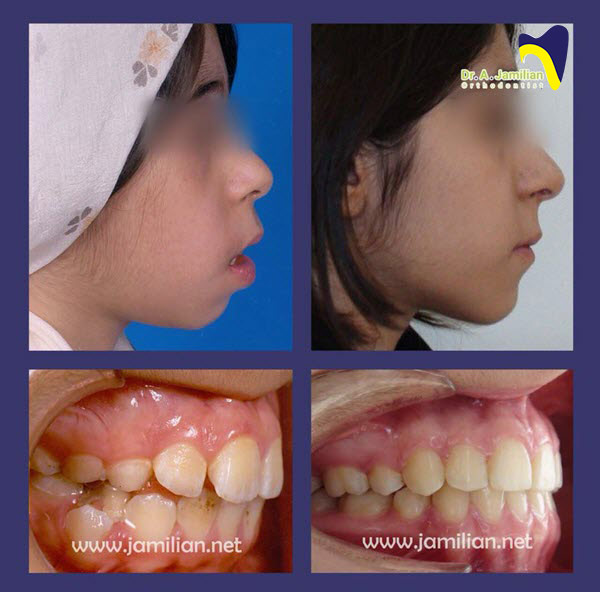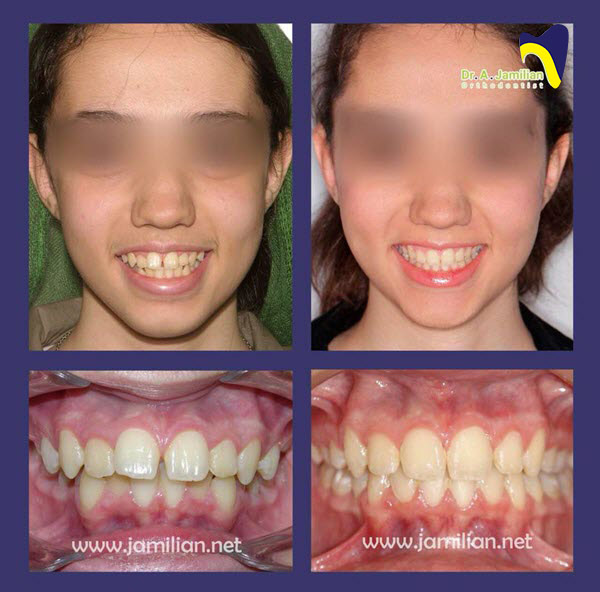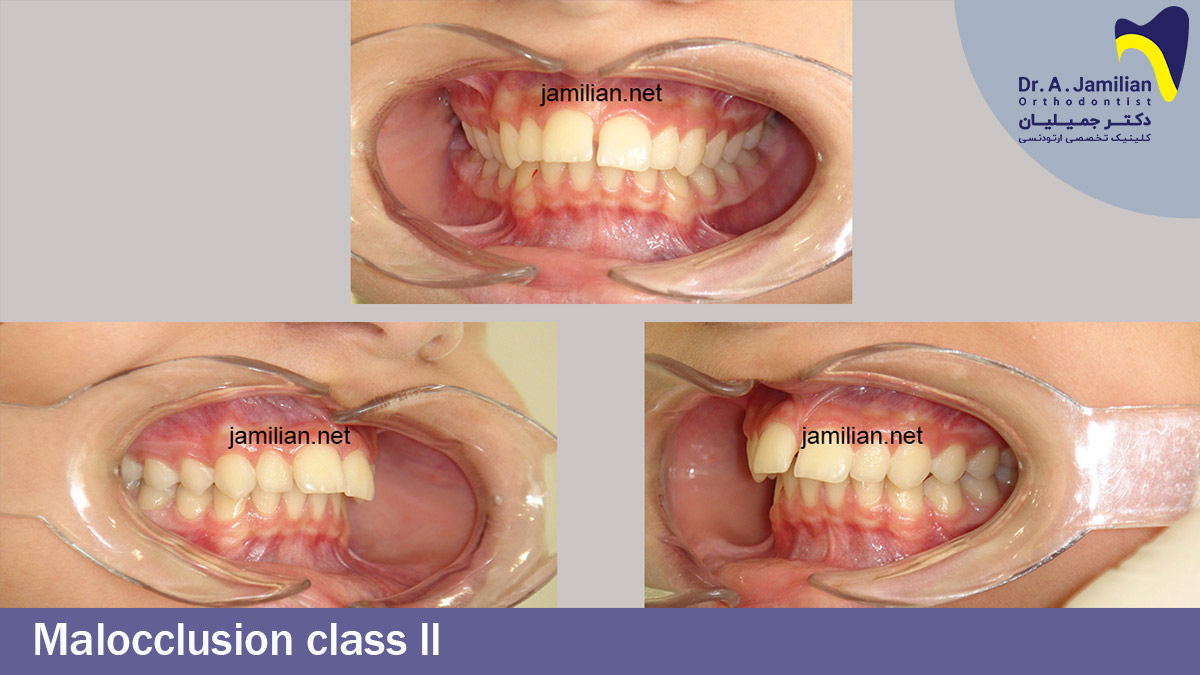A situation in which maxilla and mandible are in disharmony, the maxilla is protruded or the mandible sits backward from where it should be, or a combination of both. Side view or profile of these people is directed to the convex. In prepubertal patients, this malocclusion could be treated by moving the lower jaw forward and the upper jaw backward by orthodontics appliances. However, without a doubt, the important point is that the patient should visit an orthodontist prior to the onset of puberty. In case the patient passed puberty or is an adult, the jaw correction could not be carried out only by orthodontics and without the surgery and in case the malocclusion is not severe, the appearance of the patient could be improved by changing the position of teeth by fixed orthodontics. However, in cases of severe malocclusions, both orthodontics and surgery are necessary for changing the position of the patient’s jaw.
This malocclusion is divided into two categories, Division 1 and Division 2.
1- Class II Division 1
In this type of malocclusion, the patient suffers from increased overjet that causes a significant disharmony between two jaws.

2- Class II Division 2
In this type of malocclusion, front teeth of the maxilla are placed vertically or facing backward and the patient is suffering from a deep overbite. In this type of malocclusion, there is a disharmony between two jaws, however, due to the fact that the front teeth of the maxilla are positioned vertically or tilted backward, the disharmony between two jaws seems slighter, but the crowded teeth of the maxilla and severe deep bite are obvious.
The Following Images are Patients with Class II Division 2:

Class II Division 2
Complications of class 2 malocclusion
Class 2 malocclusion is the disharmony between jaws and teeth, which could cause serious complications for oral health. These side effects are known by the following names:
- Teeth crowding
- Mandible sitting far behind the maxilla

What Factors Cause Class 2 Malocclusion
Malocclusions are often hereditary. Meaning that they transfer from one generation to another. Some environmental conditions or bad habits may result in malformation of the structure of the jaws. The followings are the factor causing the class 2 malocclusion:
- Inheritance and genetics.
- Sucking fingers as a kid.
- Trauma causing damage to the alignment of jaws and teeth. Especially, traumas to the mandible
- Overdevelopment of the maxilla and underdevelopment of the mandible

before and after class 2 division treatment by orthodontist dr. jamilian
Class 2 Malocclusion Treatment Procedures
Based on the cause of the malocclusion, the orthodontist will propose one of the following procedures:
- Using fixed orthodontics to change the position of teeth
- Using removable orthodontics to change the position of jaws
- Extracting one or more teeth to cure the severe teeth crowding
- Surgery for changing the shape or shortening the jaw
How to Prevent Class 2 Malocclusion
Preventing Class 2 malocclusion might be difficult. Because most of the time this disease is hereditary. The best way to prevent this type of malocclusion is by visiting the orthodontist during early ages. Quitting bad habits, properly protecting jaw and teeth, practicing oral and dental hygiene are among the actions that could be carried out to prevent this type of malocclusion. By paying a visit to an orthodontist you can choose the best and fastest procedure to treat the Class 2 malocclusion without needing the jaw surgery in the future.






